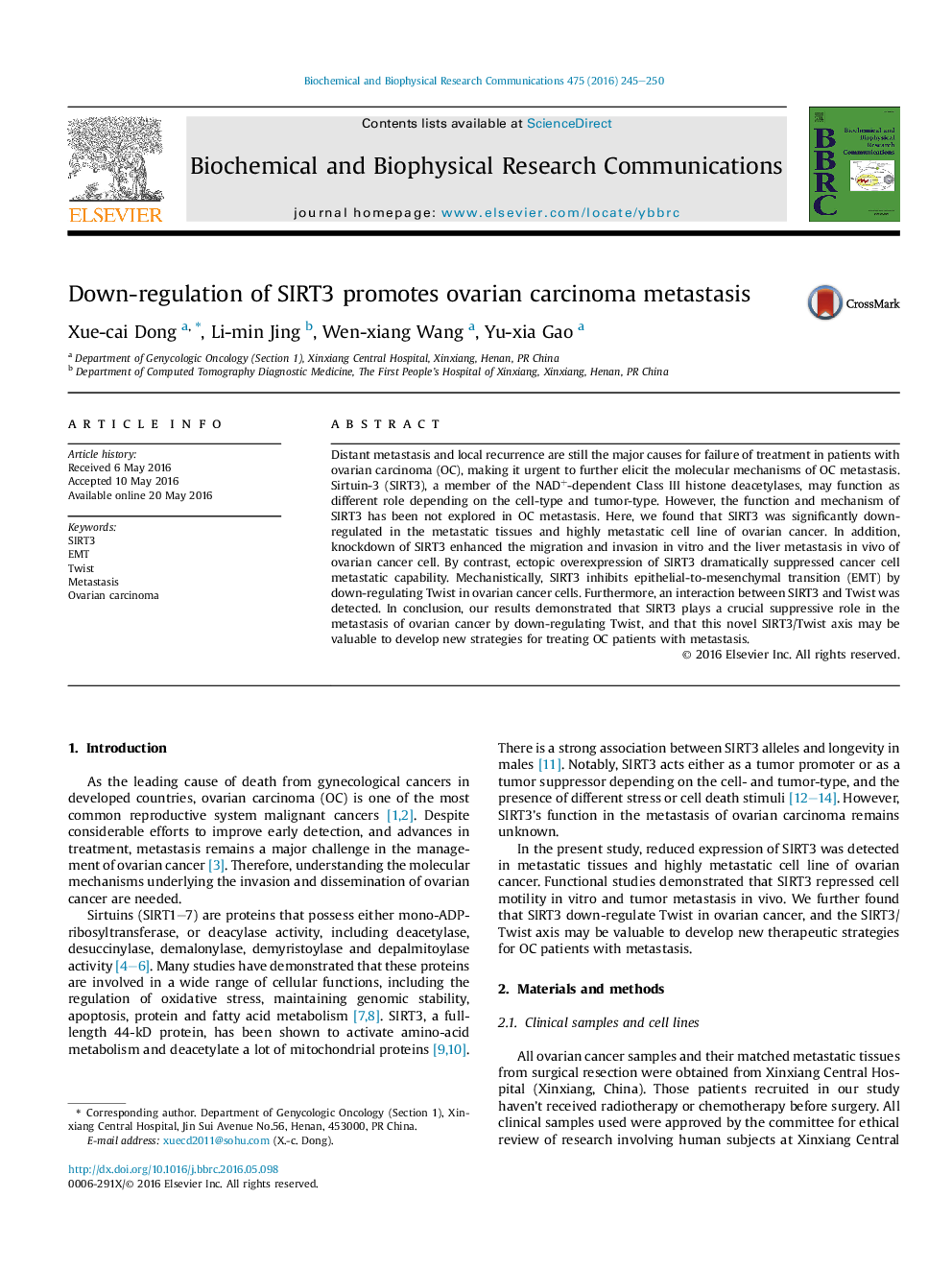| Article ID | Journal | Published Year | Pages | File Type |
|---|---|---|---|---|
| 1927802 | Biochemical and Biophysical Research Communications | 2016 | 6 Pages |
•SIRT3 is decreased in the metastatic tissues and highly metastatic cell line of ovarian carcinoma.•SIRT3 suppresses ovarian cancer cell migration and invasion in vitro.•SIRT3 inhibits metastasis of ovarian cancer cell in vivo.•SIRT3 impairs epithelial-mesenchymal transition by down-regulating Twist in ovarian cancer.
Distant metastasis and local recurrence are still the major causes for failure of treatment in patients with ovarian carcinoma (OC), making it urgent to further elicit the molecular mechanisms of OC metastasis. Sirtuin-3 (SIRT3), a member of the NAD+-dependent Class III histone deacetylases, may function as different role depending on the cell-type and tumor-type. However, the function and mechanism of SIRT3 has been not explored in OC metastasis. Here, we found that SIRT3 was significantly down-regulated in the metastatic tissues and highly metastatic cell line of ovarian cancer. In addition, knockdown of SIRT3 enhanced the migration and invasion in vitro and the liver metastasis in vivo of ovarian cancer cell. By contrast, ectopic overexpression of SIRT3 dramatically suppressed cancer cell metastatic capability. Mechanistically, SIRT3 inhibits epithelial-to-mesenchymal transition (EMT) by down-regulating Twist in ovarian cancer cells. Furthermore, an interaction between SIRT3 and Twist was detected. In conclusion, our results demonstrated that SIRT3 plays a crucial suppressive role in the metastasis of ovarian cancer by down-regulating Twist, and that this novel SIRT3/Twist axis may be valuable to develop new strategies for treating OC patients with metastasis.
